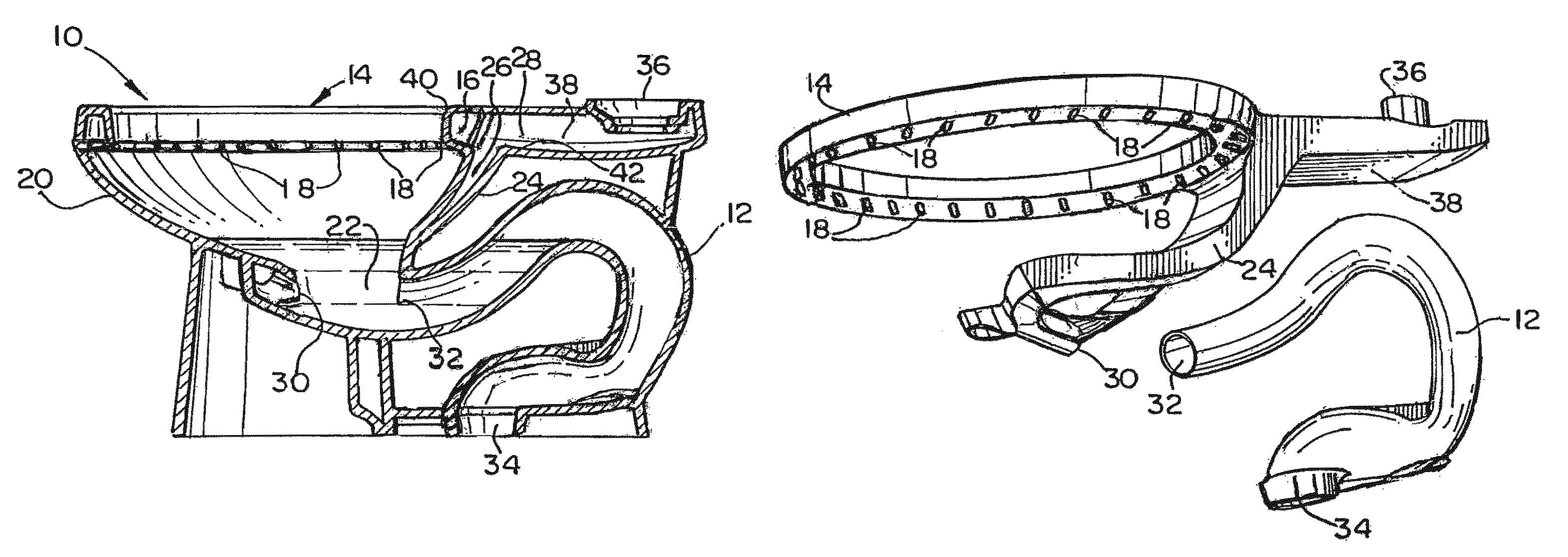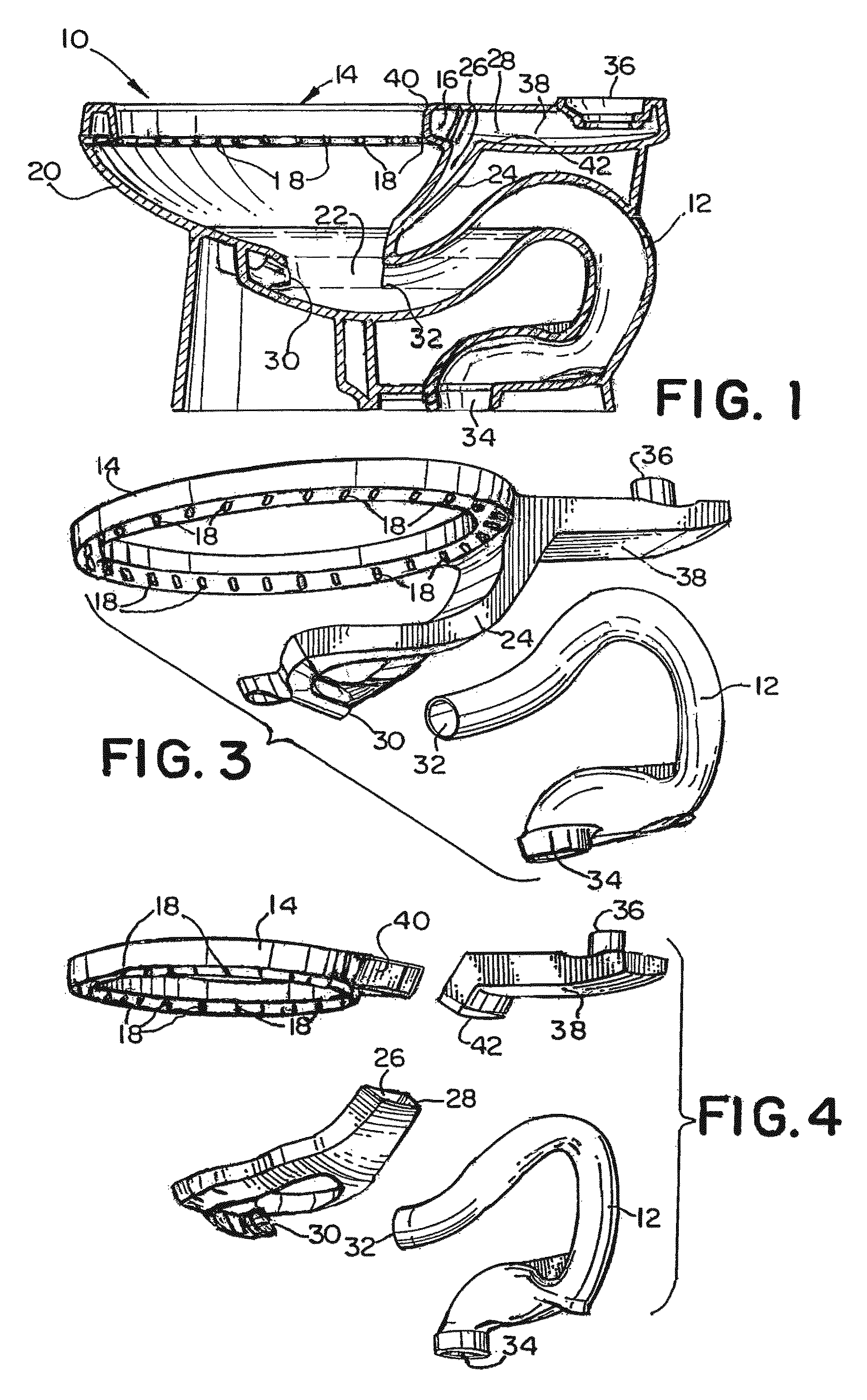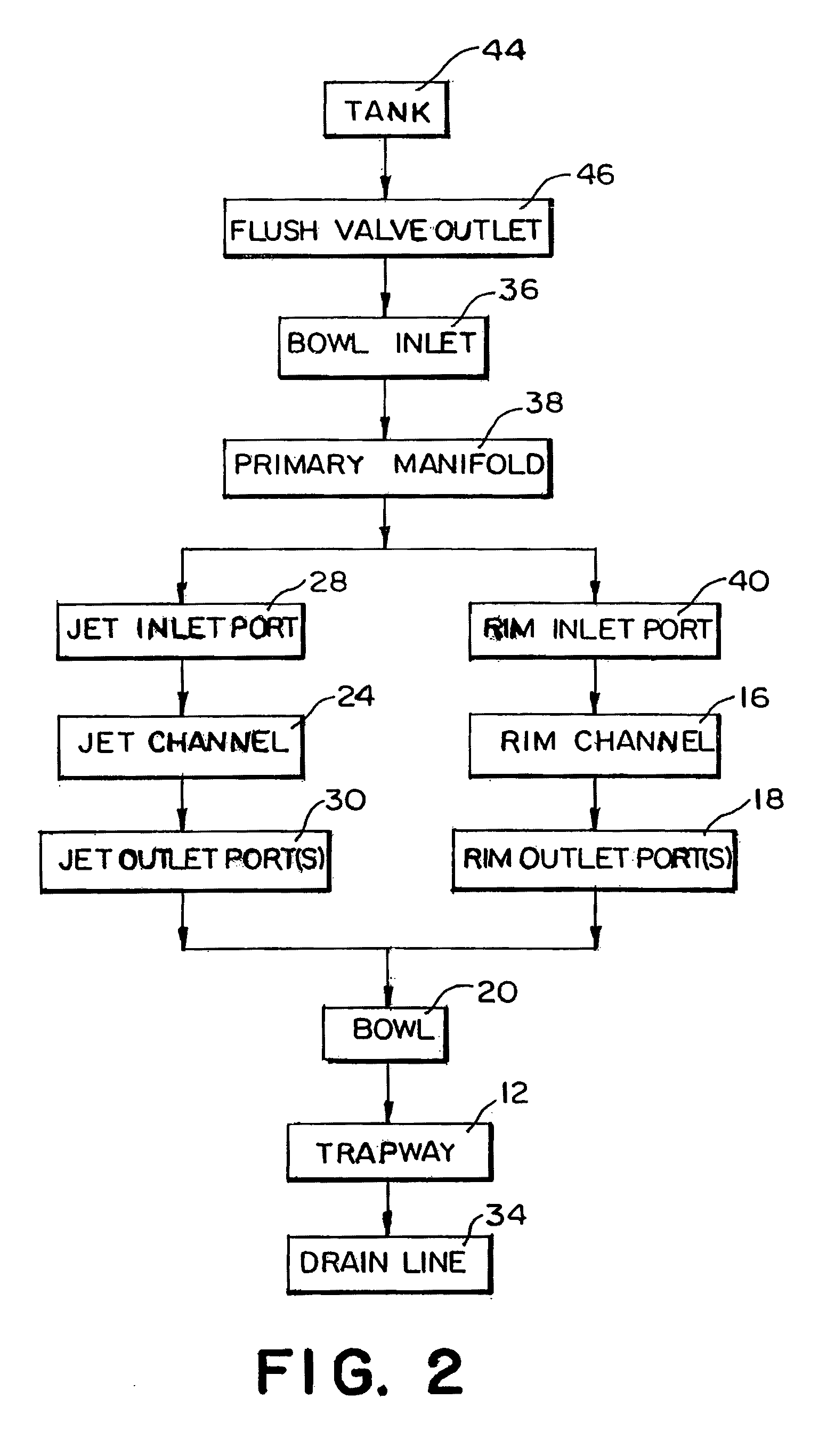High performance toilets capable of operation at reduced flush volumes
a toilet and flushing technology, applied in water closets, water installations, constructions, etc., can solve the problems of poor bulk removal performance, high water level, and manual cleaning of the toilet bowl, and achieve the effect of reducing the water volume without diminishing the ability of the toilet to remove waste and clean the toilet bowl
- Summary
- Abstract
- Description
- Claims
- Application Information
AI Technical Summary
Benefits of technology
Problems solved by technology
Method used
Image
Examples
example 7 (
Inventive)
[0139]A 1.6 gallon per flush toilet with dual direct-fed jets was fabricated according to a preferred embodiment of the invention. The toilet geometry and design were identical to that represented in FIGS. 1 and 3. The toilet's performance in bulk removal is similar to the commercially available examples above, capable of scoring 1000 g on the MaP test. As seen in Table 3, the internal geometry of all of the ports and channels in the hydraulic pathway are within the limits specified by this invention. The cross-sectional area of the primary manifold was 6.33 in2, the jet inlet port area was 4.91 in2, the rim inlet port area was 2.96 in2, the jet outlet port area was 1.24 in2, and the rim outlet port area was 0.49 in2. The critical ratios between the port sizes were also maintained: The ratio of the cross-sectional area of the primary manifold to the sum of the rim and jet outlet ports was 3.66. And the ratio of the rim inlet port area to rim outlet port area was 6.04, well...
examples 8-12
Inventive
[0141]CFD simulations were performed to further demonstrate the scope and utility of the invention. The general design of the toilets studied in CFD is that illustrated in FIGS. 1 and 3. However, specific dimensions were varied to show the resultant impact on flush performance and pressure generated and maintained in the rim of the toilet. The first set of simulations used a flush valve with a 2 in. diameter outlet, corresponding to a flush valve outlet area of 3.14 in2. While holding the flush valve outlet area constant, the cross-sectional area of the entire hydraulic pathway (that is, the cross-sectional area of the primary manifold, rim inlet port, jet inlet port, rim channel, and jet channel) was varied between a high and low setting. Likewise, the jet port and rim port areas were varied between high and low settings to create a 22 designed experiment. Adding a point close to the center of the space resulted in the five CFD simulations shown as Examples 8-12 in Table 3...
examples 13-17
Inventive
[0145]Additional CFD simulations were performed to further demonstrate the scope and utility of the invention. The general design of the toilets studied in CFD is that illustrated in FIGS. 1 and 3. However, specific dimensions were varied to show the resultant impact on flush performance and pressure generated and maintained in the rim of the toilet. This second set of simulations used a flush valve with a 3 inch diameter outlet, corresponding to a flush valve outlet area of 7.06 in2. The trapway size was also increased to take advantage of the higher flow achievable with a 3 inch valve. While holding the flush valve outlet area constant, the cross-sectional area of the entire hydraulic pathway (that is, the cross-sectional area of the primary manifold, rim inlet port, jet inlet port, rim channel, and jet channel) was varied between a high and low setting. Likewise, the jet port and rim port areas were varied between high and low settings to create a 22 designed experiment....
PUM
 Login to View More
Login to View More Abstract
Description
Claims
Application Information
 Login to View More
Login to View More - R&D
- Intellectual Property
- Life Sciences
- Materials
- Tech Scout
- Unparalleled Data Quality
- Higher Quality Content
- 60% Fewer Hallucinations
Browse by: Latest US Patents, China's latest patents, Technical Efficacy Thesaurus, Application Domain, Technology Topic, Popular Technical Reports.
© 2025 PatSnap. All rights reserved.Legal|Privacy policy|Modern Slavery Act Transparency Statement|Sitemap|About US| Contact US: help@patsnap.com



